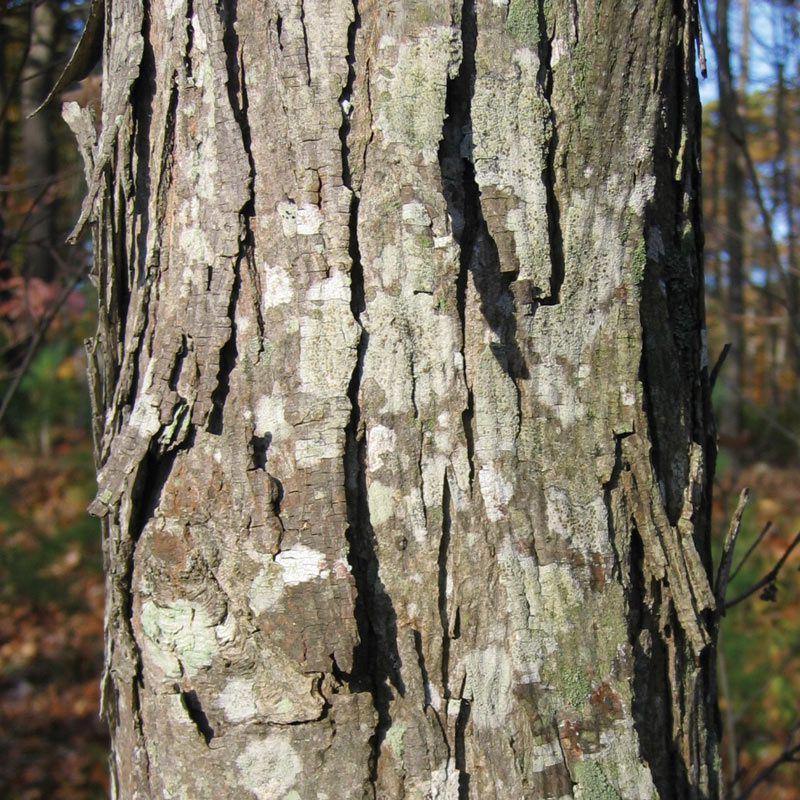Shaggy Giants: Shagbark Hickory
The Great Outdoors | September 1, 2021

By Jackie Scharfenberg, Forest Naturalist, Wisconsin Department of Natural Resources
Photo by: Keith Kanoti, Maine Forest Service, USA
Come join me in the woods today as I search for some shaggy giants!
Don’t worry; these giants won’t hurt you! They stand 60 to 80 feet tall and sometimes more than 100 feet when they reach old age. That’s three to five times taller than the average two-story house! They can stretch out their limbs to cover an area of 30 to 50 feet in diameter. It’s a good thing these limbs attach to a wide, strong torso or trunk, supported by a long deep tap root. They grow slowly and can live to more than 350 years old.
The best woods to find these giants possess deep, rich, moist, well-drained soils and are located in the eastern United States and southeast Canada. They cannot not be found in the woods of the far southeastern United States nor the Gulf of Mexico plains.
These giants do not eat but make their food in their own amazing factories attached to their limbs. Each factory consists of a feather-like (pinnately) compound leaf with five to seven leaflets, usually five. The three end leaflets grow much larger than those pairs closer to stem.
I love to search for these giants in spring when their large hairy terminal buds open. The red bud scales peel back exposing the new leaves that look like praying hands before they extend out to capture the sunlight. These shy giants don’t like to show off. After the leaves fully open, they produce inconspicuous green hanging male catkins and small sperate female flowers found in terminal spikes.
After the flowers come the seeds. All summer they grow on these giants reaching the size of ping-pong balls. By late summer/early fall, they begin to drop to the ground. Watch out so you don’t get thunked in the head by one. The thick green husk splits into four sections exposing a whitish nut inside that contains high amounts of protein, fats, and carbohydrates. A whole host of critters search out these nuts to devour from black bears, foxes, squirrels and mice to wood ducks, wild turkeys, crows, and red-bellied woodpeckers. Humans also like to eat the sweet tasting nut meat.
It takes these giants 10 years to produce nuts, and 40 years to generate large quantities of nuts. They yield a good crop every one to five years in an unpredictable cycle. These two facts make them unsuitable for commercial crop production.
Their trunks consist of tough, heavy, hard, resilient wood, which is good for making things like furniture, flooring, tool handles, dowels, ladders and drumsticks. In the past folks crafted wagon and carriage wheels from this wood. The close-grained heartwood is reddish brown while the sapwood is nearly white. The wood makes excellent fuel wood and imparts a wonderful smoky flavor to foods.
Ah, I found my shaggy giant with its gray, peeling, curving bark. Please meet the shagbark hickory (Carya ovata), one of my favorite trees found in a hardwood forest.



